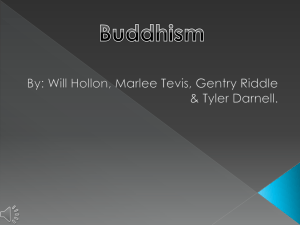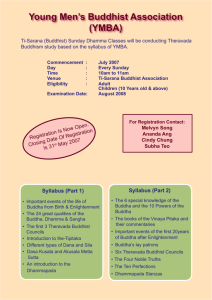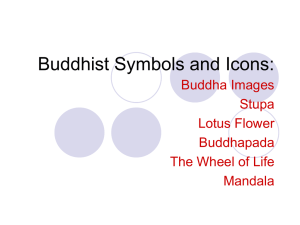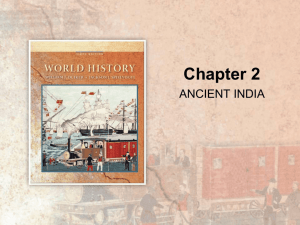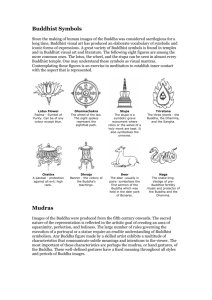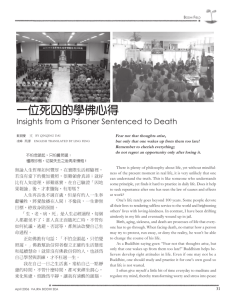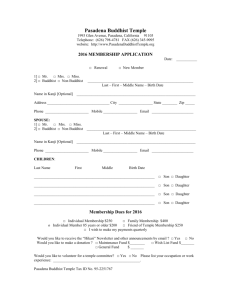vinfo-07-wow
advertisement
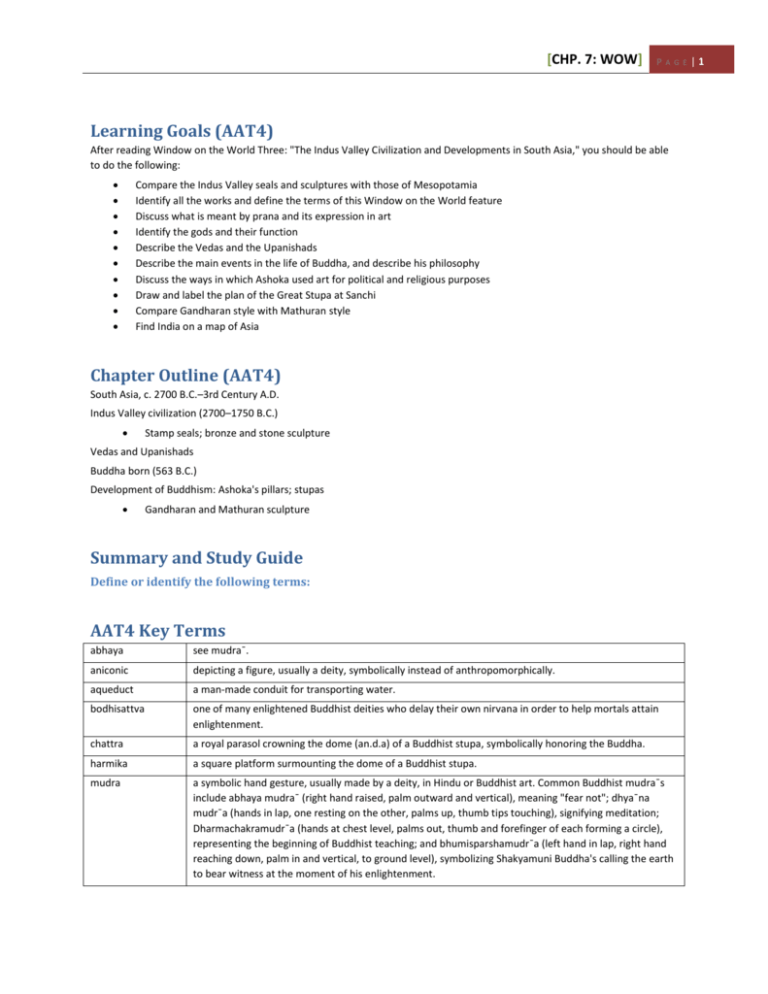
[CHP. 7: WOW] P A G E |1 Learning Goals (AAT4) After reading Window on the World Three: "The Indus Valley Civilization and Developments in South Asia," you should be able to do the following: Compare the Indus Valley seals and sculptures with those of Mesopotamia Identify all the works and define the terms of this Window on the World feature Discuss what is meant by prana and its expression in art Identify the gods and their function Describe the Vedas and the Upanishads Describe the main events in the life of Buddha, and describe his philosophy Discuss the ways in which Ashoka used art for political and religious purposes Draw and label the plan of the Great Stupa at Sanchi Compare Gandharan style with Mathuran style Find India on a map of Asia Chapter Outline (AAT4) South Asia, c. 2700 B.C.–3rd Century A.D. Indus Valley civilization (2700–1750 B.C.) Stamp seals; bronze and stone sculpture Vedas and Upanishads Buddha born (563 B.C.) Development of Buddhism: Ashoka's pillars; stupas Gandharan and Mathuran sculpture Summary and Study Guide Define or identify the following terms: AAT4 Key Terms abhaya see mudra¯. aniconic depicting a figure, usually a deity, symbolically instead of anthropomorphically. aqueduct a man-made conduit for transporting water. bodhisattva one of many enlightened Buddhist deities who delay their own nirvana in order to help mortals attain enlightenment. chattra a royal parasol crowning the dome (an.d.a) of a Buddhist stupa, symbolically honoring the Buddha. harmika a square platform surmounting the dome of a Buddhist stupa. mudra a symbolic hand gesture, usually made by a deity, in Hindu or Buddhist art. Common Buddhist mudra¯s include abhaya mudra¯ (right hand raised, palm outward and vertical), meaning "fear not"; dhya¯na mudr¯a (hands in lap, one resting on the other, palms up, thumb tips touching), signifying meditation; Dharmachakramudr¯a (hands at chest level, palms out, thumb and forefinger of each forming a circle), representing the beginning of Buddhist teaching; and bhumisparshamudr¯a (left hand in lap, right hand reaching down, palm in and vertical, to ground level), symbolizing Shakyamuni Buddha's calling the earth to bear witness at the moment of his enlightenment. [CHP. 7: WOW] P A G E |2 prana the fullness of life-giving breath that appears to animate some south and southeast Asian sculpture. Serapaeum a building or shrine sacred to the Egyptian god Serapis. stupas in Buddhist architecture, a dome-shaped or rounded structure made of brick, earth, or stone, containing the relic of a Buddha or other honored individual. tribhanga in Buddhist art, the "three bends posture," in which the head, chest, and lower portion of the body are angled instead of being aligned vertically. vedika a railing marking off sacred space in south Asian architecture, often found surrounding a Buddhist stupa or encircling the axis-pillar atop its dome(an.d.a). Assignment Read Chapter and answer the following questions in about a half page handwritten (legibly) in your notebook: Terms (be able to identify these by sight, explain these in relation to art, and know an example of each in relation to a work of art) Art Works (know these works by sight, title, date, medium, scale, and location (original location also if moved) and be able to explain and analyze these in relation to any concept, term, element, or principle)
